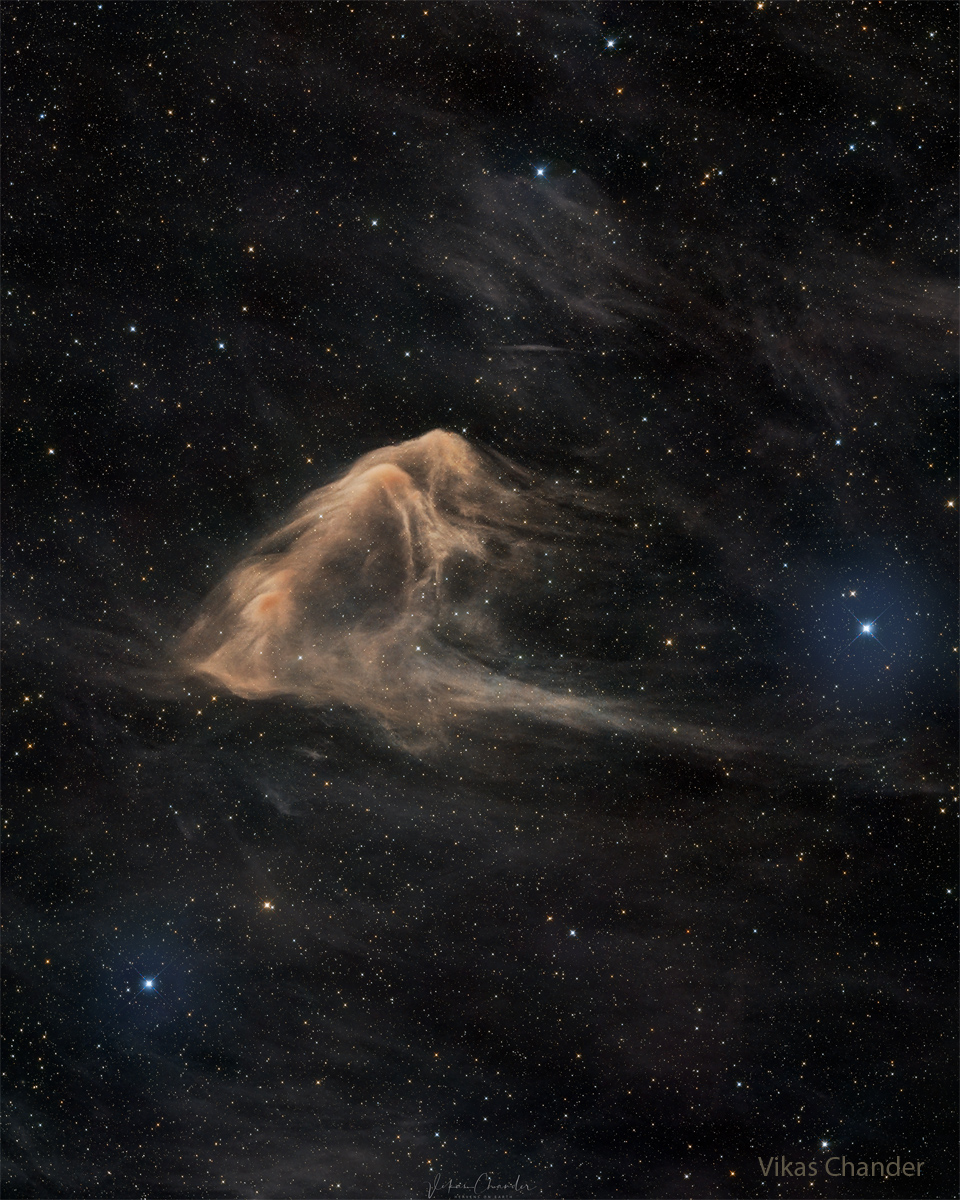2023年11月27日
LBN 86: The Eagle Ray Nebula
Image Credit & Copyright: Vikas Chander
Explanation: This eagle ray glides across a cosmic sea. Officially cataloged as SH2-63 and LBN 86, the dark nebula is composed of gas and dust that just happens to appear shaped like a common ocean fish. The interstellar dust nebula appears light brown as it blocks and reddens visible light emitted behind it. Dark nebulas glow primarily in infrared light, but also reflect visible light from surrounding stars. The dust in dark nebulas is usually sub-millimeter chunks of carbon, silicon, and oxygen, frequently coated with frozen carbon monoxide and nitrogen. Dark nebulas are also known as molecular clouds because they also contain relatively high amounts of molecular hydrogen and larger molecules. Previously unnamed, the here dubbed Eagle Ray Nebula is normally quite dim but has been imaged clearly over 20-hours through dark skies in Chile.
Follow APOD on: Discord
Tomorrow’s picture: largest moon
LBN 86: 鹰魟星云
影像提供与版权: Vikas Chander
说明: 这只鹰魟在宇宙海里滑翔。这个由气体和尘埃组成、编录号为SH2-63和LBN 86的暗星云,恰巧形似常见的海鱼。这团星际尘埃星云之所以是浅棕色的,则是因为它遮挡并红化了来自后方的可见光。暗星云的主要发光波段在红外光,但也会反射周围恒星的可见光。暗星云内的尘埃,通常是次毫米大小的粒状碳、矽和氧,外面则包覆着冻结的一氧化碳和氮。暗星云亦称为分子云,因为它们拥有相对丰富的分子氢及大分子。这团先前未命名,如今有鹰魟昵称的星云,通常很昏暗,但是在这幅摄于智利幽暗天空下、曝光时间超过20小时的影像里,其身影变得很清晰。 (eagle ray 鹰魟 鹞鲼)
在以下位置关注APOD: Discord
明日的图片: largest moon



